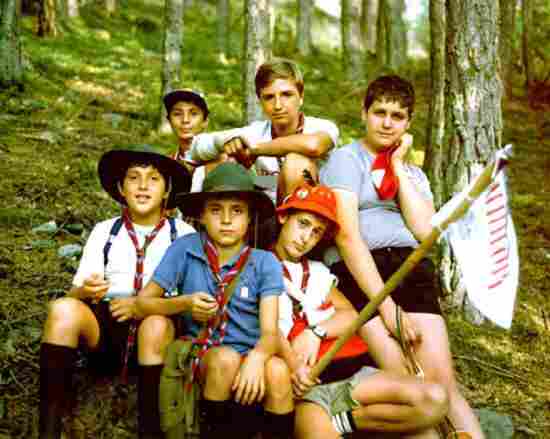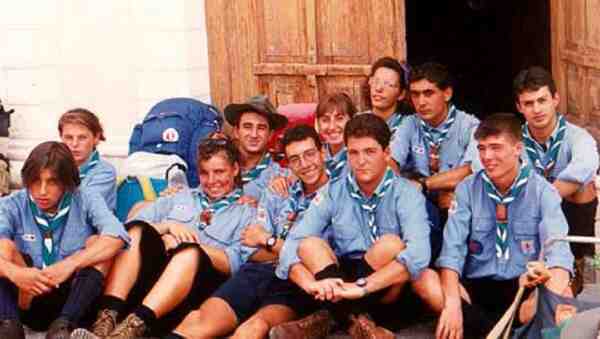
Figure 1.--Many Scout associations around the world demphazied the uniform during the 1990s. Scouts Associations in some countries, like Hong Kong, still give considerable attention to the uniform.


Figure 1.--Many Scout associations around the world demphazied the uniform during the 1990s. Scouts Associations in some countries, like Hong Kong, still give considerable attention to the uniform. |
One continuing trend observable in the 1990s was the continuing decline in the popularity of uniforms--especially in Europe. Uniforms were once a major attraction for boys interested in joining a youth youth group. The uniform was once an aspect of Scouting that attracted boys. This gradually changed. Boys were much less interested in uniforms. Beginning in the 1970s an observable pattern in Europe was a decline in the attention to wearing uniform among some European Scouts. Many European Scout groups gave virtually no attention to uniforms.By the 1990s some Scouts groups had virtually abandoned uniforms--although boys might wear kerchiefs. This trend was not nearlly observable in some other areas. Asian Scouts still wore uniforms. Scout uniforms were still widely worn in Asia. American Scouts were one exception to the tendency of groups around the world to deemphasize the uniform. American Scouts also sill commonly wore uniforms--although standards varied from group to group.
The uniform was once an aspect of Scouting that attracted boys. Boys once had far fewer options for after school activities. Scouting came to b a major activity. Boys very much liked the idea of wearing uniforms. I'm not sure just why this was. Perhaps it was the military look in a more innocent era.
The popularity of uniforms gradually changed. Boys by the 1970s, especially older boys no longer to wear uniforms. This pattern was especially notable in Europe. I'm not sure precisely what caused this change. Perhaps World War II was a factor. Perhaps the less regimented atmpsphere of pos-War Europe was a factor. Boys tended to feel that uniforms were being forced upon them and resistance was a part of establising their identity. Children were allowed more free expression. The trend varied friom country to country, but was iobservable in different countries, including Germany, Italy, the Netherlands, and many other countries. The observable pattern througout Europe was a decline in the attention to wearing uniform among some European Scouts. This trend continued in the 1980s and was evident in the 1990s.
Many European Scout groups gave virtually no attention to uniforms. By the 1990s some Scouts groups had virtually abandoned uniforms--although boys might wear kerchiefs. Scout activings and events can be observed with boys only wearing a scatteruing iof uniform items--if abny at all. Often boys wore whatever they wanted. but might wear a knerchief to show that they were Scouts.

Figure 2.--These Italian Scouts in the 1990s, unlike the ones above, do wear uniforms. |
While many European Scouts stopped wearing uniforms, this was by no means universal. Even in Europeanncountries where many Scouts did not wear uniforms--other Scouts did. Great differences were observable between associations and units. While many Dutch, German, and Itlaian Scouts did not wear uniforms--there were Scouts in those countries did uniforms.
This trend to discard uniforms was not nearlly as observable in some other areas. Asian Scouts still very commonly wore uniforms. Some national Scout associations in fact continued to be quite strict about wearing uniforms. This was especially true in Asia. Uniforms throughout the 1990s continued to be widely worn there.
American Scouts were another exception to the tendency of groups around the world to deemphasize the uniform. American Scouts also sill commonly wore uniforms--although standards varied from group to group. Some American Scouts gave great attention to uniforms. Others considered it of little importance, as in Europe this became noticeable in the 1970s. However, in the 1990s American Scouts had not abandoned uniforms as was common in Europe. The trend of wearing uniform shirts, but not pants which appeared in the 1960s was still observable in the 1990s--but perhaps not as common.
Navigate the Historic Boys' Uniform Chronology Pages:
[Return to the Main 1990s page]
[Return to the Main chronologies page]
[The 1900s]
[The 1910s]
[The 1920s]
[The 1930s]
[The 1940s]
[The 1950s]
[The 1960s]
[The 1970s]
[The 1980s]
[The 1990s]
[The 2000s]
Navigate the Historic Boys' Uniform Web Site:
[Introduction]
[Bibliographies]
[Chronologies]
[Contributions]
[FAQs]
[Garments]
[Organizations]
[Boys' Uniform Home]
Navigate the Historic Boys' Uniform Web organizatiion pages:
[Boys' Brigade]
[Camp Fire]
[Hitler Youth]
[National]
[Pioneers]
[Royal Rangers]
[Scout]
